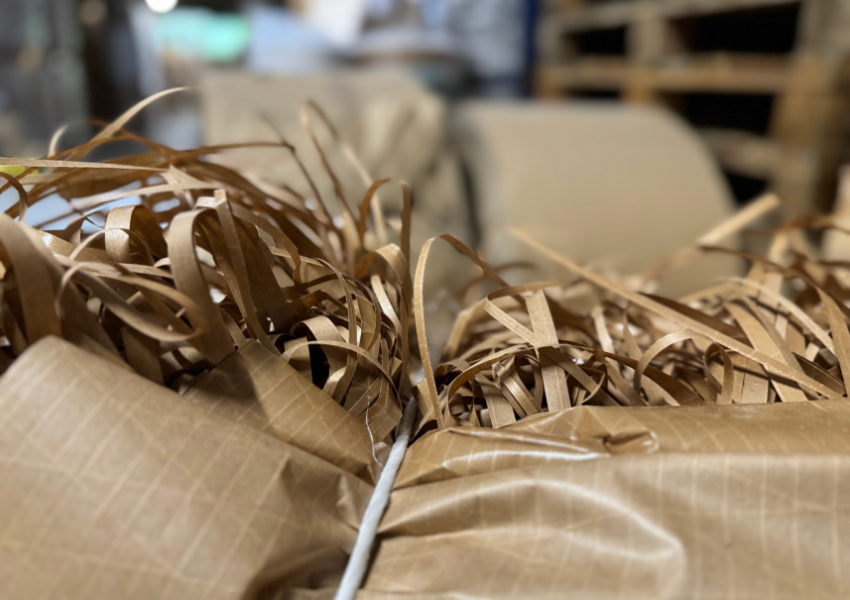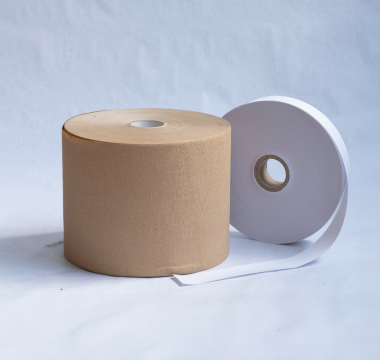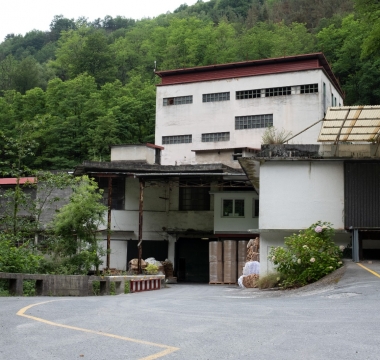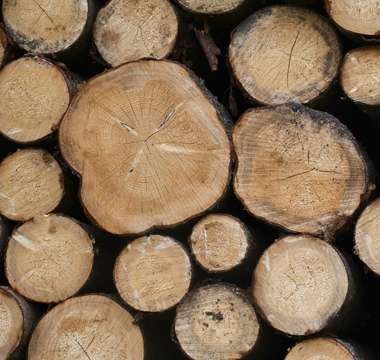Crepe Paper as a Sustainable Material
Crepe paper is a cellulose-based material typically made from renewable fiber sources. Its manufacturing involves a mechanical process that gives it elasticity and a crinkled texture—ideal characteristics for protecting fragile surfaces, adapting to irregular shapes, and cushioning impacts. However, its most important advantage today is its contribution to sustainability.
Renewable Fibers and Responsible Sourcing
Arrosi prioritizes virgin fibers sourced from responsibly managed forests, certified by organizations such as FSC® (Forest Stewardship Council). This ensures that crepe paper originates from sustainable sources, without compromising biodiversity or local communities’ rights, promoting forest sustainability.
Efficient Production with Low Energy Use
The crepe paper production process has been optimized using low-energy technologies, helping reduce the carbon footprint. Arrosi is committed to industrial practices that minimize water usage, enhance raw material efficiency, and reduce air emissions—further advancing sector-wide sustainability.
Recyclability of Crepe Paper
One of the most relevant features of crepe paper in terms of sustainability is its high recyclability. As a paper-based product, it fits easily into standard recycling systems.
Enabling the Circular Economy
Thanks to its plastic-free, toxin-free structure, crepe paper is ideal for circular economy strategies. It can be recovered, reprocessed, and transformed into new paper products, extending its lifecycle and diverting waste from landfills—an essential step toward sustainability.
Considerations for Industrial Use
In industrial applications, it is vital to avoid contamination of crepe paper with synthetic adhesives or oils, which may hinder recyclability. Arrosi advises clients on implementing solutions that maintain the material’s integrity and enhance reuse, strengthening operational sustainability.
Responsible Management of Waste and Offcuts
At Arrosi, crepe paper trimming waste is also managed under strict sustainability criteria. Offcuts are stored, compressed, and grouped in a controlled manner for collection by Bidasoa Ecogestión (ecogestion.es). This collaboration ensures that all paper waste is properly recycled and reintegrated into the value chain as secondary raw material.
Biodegradability of Crepe Paper
Crepe paper is fully biodegradable, a feature that clearly sets it apart from other packaging materials like flexible plastics or bubble wrap.
Degradation Time and Conditions
Under natural conditions (humidity, microorganisms, and oxygen), crepe paper decomposes within weeks without releasing toxic residues. This process can be accelerated in industrial or even home composting settings, provided the paper is uncontaminated—making it a strong ally for environmental sustainability.
Environmental Safety
During degradation, crepe paper does not release harmful substances or alter soil composition. This makes it a viable solution for sectors requiring temporary, eco-friendly packaging—such as agribusiness, logistics, or responsible e-commerce—all committed to sustainability.
Arrosi’s Environmental Commitment
Arrosi not only provides crepe paper-based solutions but does so under a comprehensive sustainability strategy. From product design to distribution, every stage is planned with environmental responsibility in mind.
Eco-Conscious Product Design
Arrosi’s range of crepe paper has been developed with a full lifecycle approach. It promotes grammages and widths that reduce waste, avoids unnecessary chemical treatments, and encourages the use of natural colors (brown or unbleached white) to simplify recycling and reinforce product sustainability.
Sustainable Logistics and Local Sourcing
The company prioritizes partnerships with local and European suppliers to reduce transport emissions. Packaging and storage systems are optimized to minimize secondary plastic use and improve logistics efficiency—part of Arrosi’s corporate sustainability strategy.
Transparency and Continuous Improvement
Arrosi’s environmental commitment is built on transparency. The company publishes data on resource consumption, carbon footprint, and improvement plans. This builds trust and drives constant evolution in the sustainability of the crepe paper it offers to the market.
Sustainable Applications of Crepe Paper
The use of crepe paper as a sustainable alternative is gaining traction across various industries seeking environmentally responsible solutions.
Packaging for Delicate Products
Its elasticity and cushioning ability make it ideal for wrapping fragile items without using plastic. Companies in the ceramics, glass, electronics, and automotive sectors use Arrosi crepe paper for primary protection, aligning operations with sustainability goals.
Temporary Insulation and Covering
In industrial processes or during transport, crepe paper acts as a lightweight, breathable, and biodegradable barrier. Unlike shrink films or foams, it can be disposed of with minimal impact and often without special treatment—enhancing its sustainability credentials.
Film Substitute in Packaging
More companies are replacing stretch film with crepe paper bands or die-cut reinforcements. This shift reduces non-recyclable waste and improves the brand’s environmental image, responding to today’s demand for sustainability.
Conclusion: Crepe Paper and a Sustainable Future
Crepe paper not only meets the technical demands of industrial packaging but also responds to the growing need for sustainable solutions. Its renewable origin, high recyclability, biodegradability, and the environmental focus of companies like Arrosi make it a key material for the future of responsible packaging.




